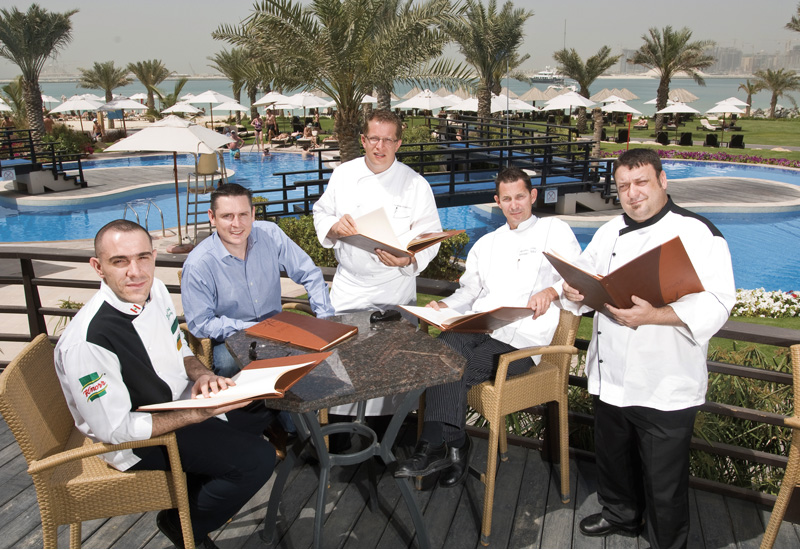Caterer Middle East met up with top executive chefs from across the region at The Westin Dubai Mina Seyahi Beach Resort and Spa’s Bussola restaurant to discuss what issues are impacting menu development in the current climate
What are the most important things to consider when developing a menu?
Anston Fivaz: There are a lot of factors; you’ve got market demographic, market expectations, market trends, availability, supply and demand, creativity, costs, menu engineering, variety, guest expectations — the list goes on and on.
Lionel Boyce: I think initially though you’ve got to look at your target audience and obviously what you want out of your business; from there the other bits and pieces fall into place.
Russell Impiazzi: I think also your staff play an important part. There’s no point putting this fantastic menu together if it’s a disaster when they create it. You’ve got to put the right training system into place and make sure that your guys know exactly what they’re doing.
Christian Gradnitzer: You’ve also got to do your market research and look at your products and your pricing; plus it’s essential to have a fair mix of dish break-downs and look at who you’re attracting — a young clientele, a business clientele or whatever.
Alfred Zuberbühler: We cater to a well defined market segment and their particularities are the first factors that determine the direction of developing a menu. Guests have preferences and requirements and a well-designed menu should always reflect them.
Wolfgang Eberle: I would say the preferences of the local clientele in regards to traditional taste and local ingredients is important, as well as integrating the chef’s own signature touch.

Advertisement
How often do you change your menus and why?
Impiazzi: I think there are always ideas and concepts floating around; you’re always looking to develop what you’ve got. As soon as you finish one menu, you have to think ‘what’s next’, otherwise you just get stuck — and bored as well.
Gradnitzer: It keeps you going and keeps the whole trend going as well.
Richy: You have to look at customer feedback too.
Zuberbühler: We generally change the menus twice a year in order to diversify the experience for our repeat guests or to meet changes in trends.
Do you accommodate special dietary requests into your menus or would you just accommodate off-menu ordering instead?
Zuberbühler: As in most restaurants, vegetarian dishes are available in a special section of the menu. But our restaurant’s a small operation so we can easily accommodate any special dietary requests.
Eberle: I think it’s important to — and personalised service is a must. Our chef de cuisine will approach the guest directly in order to discuss their dietary needs.
Gradnitzer: I think what we have in Dubai is many restaurants crammed into small areas; for example in Emirates Towers we have 15 restaurants. You have so much variety.
So to compete it’s really about balancing your concepts. You will always have your vegetarian dishes, you’ll always have fish and meat options — this is common. But how you mix it up and appeal to the market mix coming in is important. So what you offer for lunch won’t necessarily be what you have on the menu for dinner.
Fivaz: It’s basically giving your clients what they want. We all talk about healthy foods and super foods and different trends, but at the end of the day it’s all about the bottom line right now. We have policies and procedures for healthy foods and special dietary requirements, but it’s no good having 2% of your menu being lost leaders and not moving.
Impiazzi: But then chefs are much more flexible about requests these days; trends change fast and they have to cater to preferences.









 Search our database of more than 2,700 industry companies
Search our database of more than 2,700 industry companies









